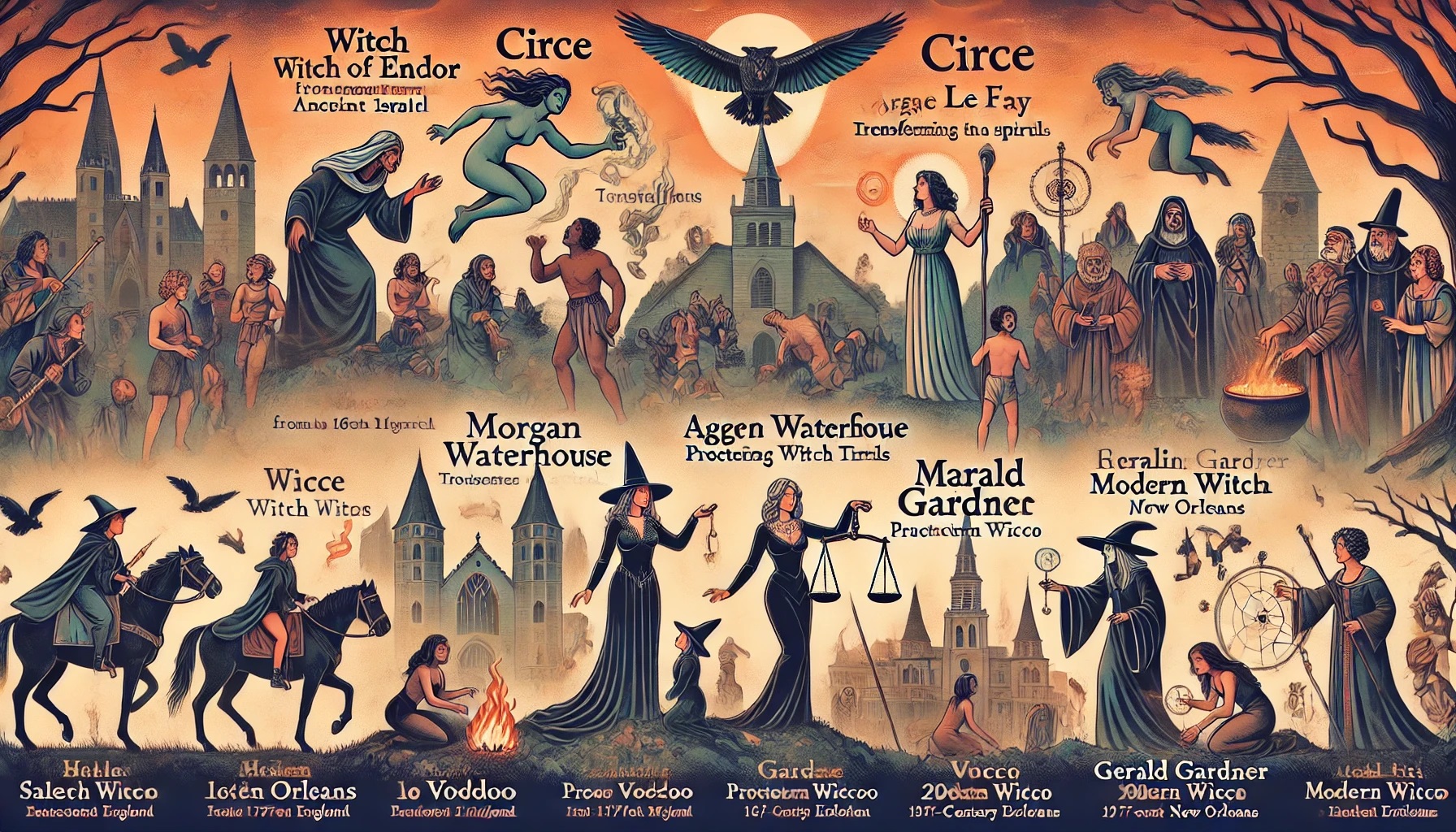World Famous Witches Through The Course Of History
Explore the captivating history of witches, from ancient times to modern-day legends. Discover the stories of famous witches and their impact on culture and society.

Jul 18, 2024
Witches have captivated human imagination for centuries, often depicted as powerful, mysterious, and sometimes malevolent figures. From ancient times to modern-day, these individuals have left an indelible mark on history. Let's explore some of the most famous witches who have become legends over time.
The Witch of Endor
The Witch of Endor is one of the earliest known witches, mentioned in the Bible's Old Testament. She was consulted by King Saul to summon the prophet Samuel's spirit. Her story highlights the ancient belief in necromancy and the supernatural.
Key Points:
- Historical Period: Around 1000 BCE
- Location: Ancient Israel
- Significance: Biblical reference showcasing early witchcraft
Circe
In Greek mythology, Circe is a powerful enchantress known for her ability to transform humans into animals. She appears in Homer's "Odyssey," where she turns Odysseus's men into pigs but later helps him on his journey.
Key Points:
- Historical Period: Ancient Greece
- Location: Island of Aeaea
- Significance: Symbol of transformation and seduction
Morgan le Fay
Morgan le Fay is a prominent figure in Arthurian legends, often depicted as a sorceress and a half-sister to King Arthur. Her character varies from a villainous witch to a benevolent healer, showing the complex nature of witchcraft in medieval literature.
Key Points:
- Historical Period: Middle Ages
- Location: Britain
- Significance: Representation in Arthurian legends
Agnes Waterhouse
Agnes Waterhouse, also known as Mother Waterhouse, was the first woman executed for witchcraft in England in 1566. Her trial set a precedent for the witch hunts that followed, highlighting the fear and superstition surrounding witches during the Renaissance.
Key Points:
- Historical Period: 16th century
- Location: England
- Significance: First recorded execution for witchcraft in England
The Salem Witches
The Salem witch trials of 1692 are among the most infamous events in American history. Several women and men were accused of witchcraft, leading to hysteria, trials, and executions. Figures like Tituba, Sarah Good, and Rebecca Nurse became symbols of the period's paranoia.
Key Points:
- Historical Period: Late 17th century
- Location: Salem, Massachusetts, USA
- Significance: Mass hysteria and injustice
Marie Laveau
Marie Laveau, known as the Voodoo Queen of New Orleans, was a powerful figure in 19th-century America. Her influence extended beyond witchcraft into politics, religion, and social issues, making her a legendary figure in both history and folklore.
Key Points:
- Historical Period: 19th century
- Location: New Orleans, USA
- Significance: Blend of Voodoo and Catholic traditions
Gerald Gardner
Gerald Gardner is considered the father of modern Wicca, a contemporary pagan religious movement. In the mid-20th century, Gardner's writings and practices helped revive and reshape the perception of witchcraft, moving it away from negative connotations.
Key Points:
- Historical Period: 20th century
- Location: England
- Significance: Revival of modern witchcraft and Wicca
Modern Witches
In contemporary times, witchcraft has seen a resurgence, with figures like Laurie Cabot and Starhawk becoming prominent leaders in the neo-pagan movement. These modern witches advocate for a deeper connection with nature and spirituality, transforming the traditional image of witches.
Key Points:
- Historical Period: 20th and 21st centuries
- Location: Global
- Significance: Modern reinterpretation of witchcraft
FAQs
What is the origin of the term "witch"?
The term "witch" is derived from the Old English word "wicce," meaning a female sorcerer or wise woman. Over time, it evolved to include various forms of magical practices.
How did the perception of witches change over time?
Initially, witches were often seen as wise healers and spiritual leaders. However, during the Middle Ages and the Renaissance, they became associated with malevolence and heresy, leading to widespread persecution. Today, the perception is more positive, focusing on spirituality and nature.
Are there any historical records of male witches?
Yes, men accused of practicing witchcraft were often referred to as warlocks or wizards. Historical records show that men were also persecuted during witch hunts, though women were more frequently targeted.
What role did witchcraft play in ancient civilizations?
In ancient civilizations, witchcraft was often intertwined with religion and medicine. Witches were revered as healers, seers, and spiritual guides, playing a significant role in their communities.
Conclusion
Witches have been an integral part of human history, evolving from revered healers to feared outcasts and finally to modern spiritual leaders. Their stories reflect society's changing attitudes toward the supernatural and the unknown. By understanding their history, we gain insight into the complexities of human belief and culture.